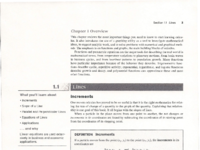Points in a Plane
WELCOME STUDENTS!
TOPIC: INCREMENTS IN X & Y
Lets have a review about plotting points in Cartesian plane
When a particle moves from one point to another in the Cartesian Plane, there are changes in its coordinates. These net changes, called the increments of the coordinates, are determined by subtracting the coordinates of the starting point (initial point) from corresponding coordinates of the point where the particle stops (final point).
![[size=100]In general, when a particle moves from
to [math]P_1\left(x_1,y_1\right)[/math] the increment in x is [math]∆x=x2-x1[/math] and the increment in y is [math]∆y=y2-y1[/math] where ∆x (read as “delta x”) stands for the increment in x and ∆y (read as “delta y”) stands for the increment in y.
[/size]](https://www.geogebra.org/resource/wzznwyqr/lJy72sKDj2wZHBOW/material-wzznwyqr.png)
1.1_textbook
Try to answer this
If the initial point is S(3, -2) and the final point is T(-1, 5) What is x?
If the initial point is S(3, -2) and the final point is T(-1, 5) What is y?
Find the increments of x and y if the initial point is A and the final point is B
Show your solution.

Determine the increments in x and y as a particle moves from Point 1 to Point 2
God Bless and Mabuhay!
